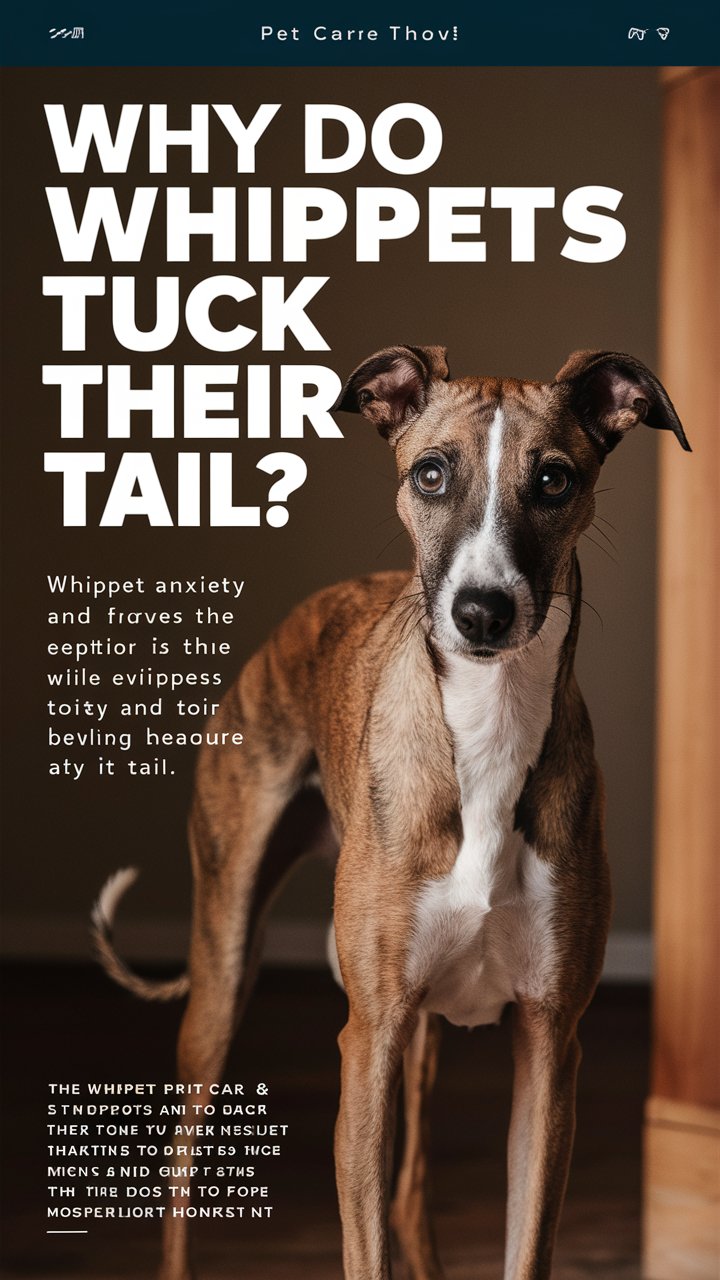Your Whippet’s tail is like a little antenna — it’s constantly sending signals about how they feel. Whether it’s wagging with joy, hanging low, or tucked tightly between their legs, it’s their way of “talking” without words.
But when your Whippet keeps tucking their tail, what exactly are they trying to tell you? 🤔
In this article, you’ll discover:
✅ 10 scientifically-backed reasons why Whippets tuck their tails
✅ How to know when it’s harmless vs. when you should worry
✅ 6 expert tips to help your Whippet feel safe and confident
✅ FAQs Whippet owners ask about this common behavior
Let’s dive in.
🐾 Why Do Whippets Tuck Their Tails?
Whippets are gentle, sensitive, and affectionate dogs. Their body language often reflects their emotions, and a tucked tail is usually a sign of stress, fear, submission, or discomfort.
But that’s not the whole story…
Here are the top 10 reasons explained in detail.
🔟 Top Reasons Why Whippets Tuck Their Tails
1. Submission
Whippets often tuck their tails to show they aren’t a threat. It’s their way of saying: “I respect you, I don’t want conflict.”
- Happens when scolded or around dominant dogs.
- Similar to a human lowering their head in humility.
2. Fear of Loud Noises
Thunderstorms, fireworks, or even the vacuum cleaner can make your Whippet tuck their tail.
👉 Whippets are especially noise-sensitive due to their thin coats and delicate temperament.
3. Pain or Injury
If your Whippet is limping, whining, or licking themselves along with a tucked tail, it could mean physical pain.
- Muscle strain
- Hidden cuts or wounds
- Internal discomfort (stomach pain, hip issues)
➡️ Always check their body and visit the vet if unsure.
4. Cold Weather
Unlike Huskies, Whippets have thin coats and low body fat, making them extremely sensitive to cold.
- Tucking the tail helps them conserve heat.
- This is why Whippets often need sweaters or blankets in chilly weather.
5. Stress or Anxiety
Changes in environment can cause stress:
- Moving to a new home
- New baby or pet in the family
- Being left alone too often
Whippets thrive on routine. Any disruption may cause tail-tucking.
6. Respect for Older Dogs
Sometimes tail-tucking isn’t fear — it’s respect. A Whippet puppy may tuck its tail around older, experienced dogs to show admiration.
7. Uncertainty in New Situations
Meeting new people, visiting new places, or going to a busy park can make them cautious. A tucked tail = “I’m not sure if I’m safe here yet.”
8. Anticipation of Punishment
If they’ve been disciplined before, Whippets might tuck their tails before you even raise your voice — almost like a pre-emptive apology.
9. Overstimulation
Sometimes it’s not fear but too much excitement. Lots of people, loud music, or too many dogs can overwhelm them. Their tucked tail says: “I need a break.”
10. Medical Issues
- Anal gland discomfort
- Spinal problems
- Hip dysplasia
➡️ If tail-tucking is constant and unrelated to behavior, it may be a medical issue that only a vet can diagnose.
✅ How To Help: 6 Expert Tips
1. Identify the Trigger
Watch when it happens. Is it noise, cold, or a certain person/dog? Pinpointing the cause is the first step to helping.
2. Provide Warmth
Since Whippets get cold easily, invest in:
- Cozy sweaters
- Heated dog beds
- Warm blankets
3. Increase Socialization
Expose your Whippet to safe, positive experiences:
- Puppy classes
- Gentle playdates
- New environments with treats & praise
This builds confidence and reduces fear.
4. Positive Reinforcement Training
Never punish a Whippet for being fearful. Instead, reward calm and confident behavior. Use treats, praise, and play to build trust.
5. Calming Tools
- Anxiety wraps (like Thundershirts)
- Calming chews (vet-approved)
- Classical music or white noise machines during storms
6. Vet Check
If the tail stays tucked more often than not, it’s best to rule out pain or medical issues. Early detection = faster recovery.
❓ Whippet Tail-Tucking FAQs
Q: Should I worry if my Whippet tucks their tail all the time?
👉 Yes. Occasional is normal, but constant tucking may indicate pain or illness.
Q: Is tail-tucking always fear?
👉 No. It can also mean cold, respect, or uncertainty.
Q: Can I train my Whippet not to tuck their tail?
👉 You can’t train it out, but you can reduce triggers and build confidence through positive reinforcement.
📌 Final Thoughts
A tucked tail is your Whippet’s way of communicating. Instead of ignoring it, see it as a signal: “Something is affecting me.”
By identifying the cause, providing comfort, and addressing medical or behavioral concerns, you’ll help your Whippet feel safe, happy, and confident.
💡 Pro Tip: Keep a “tail diary” — note when and where your Whippet tucks their tail. Patterns can help you solve the mystery faster.
